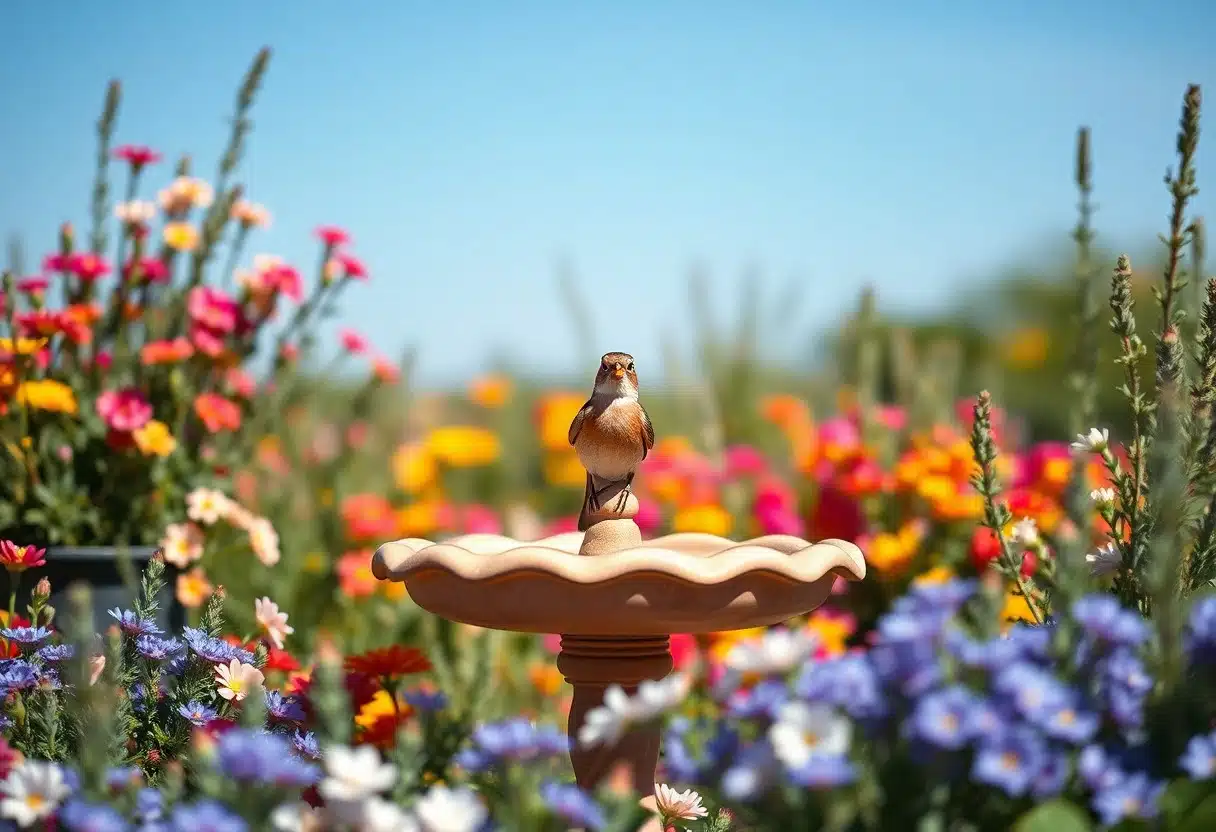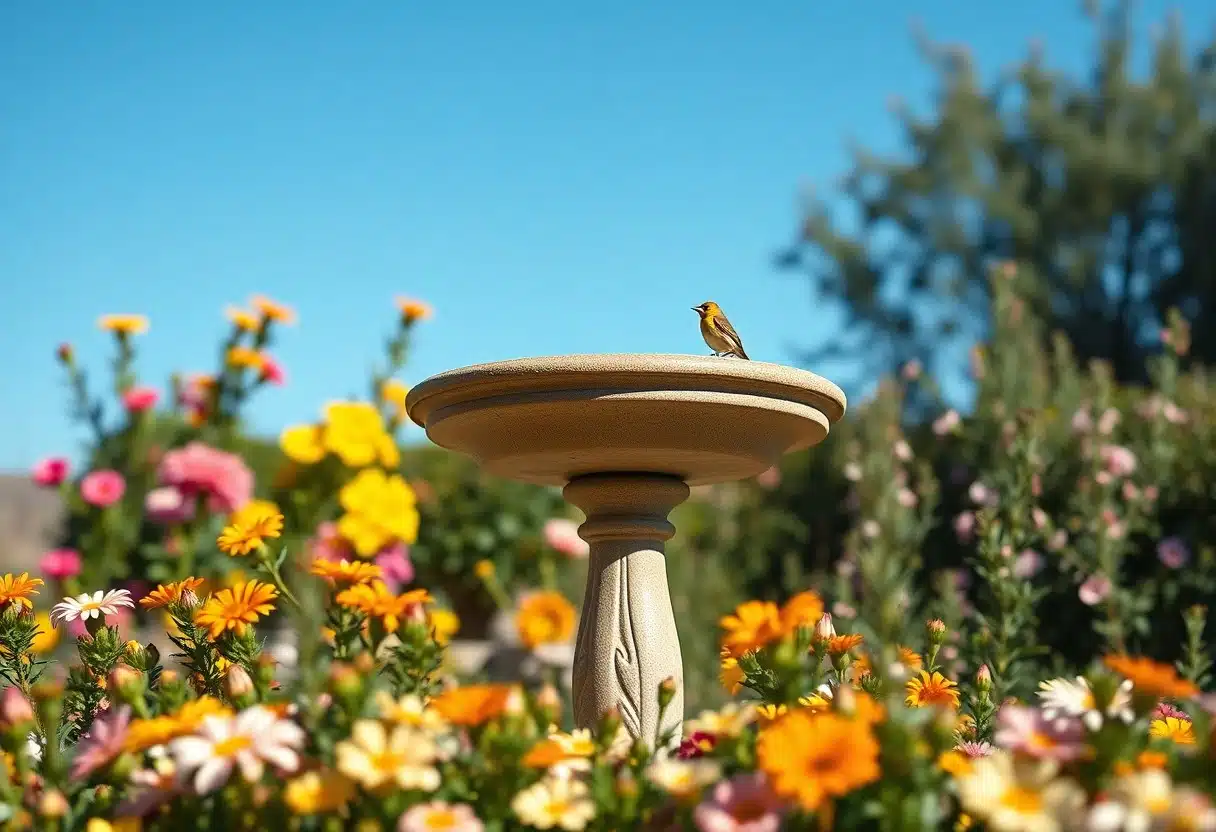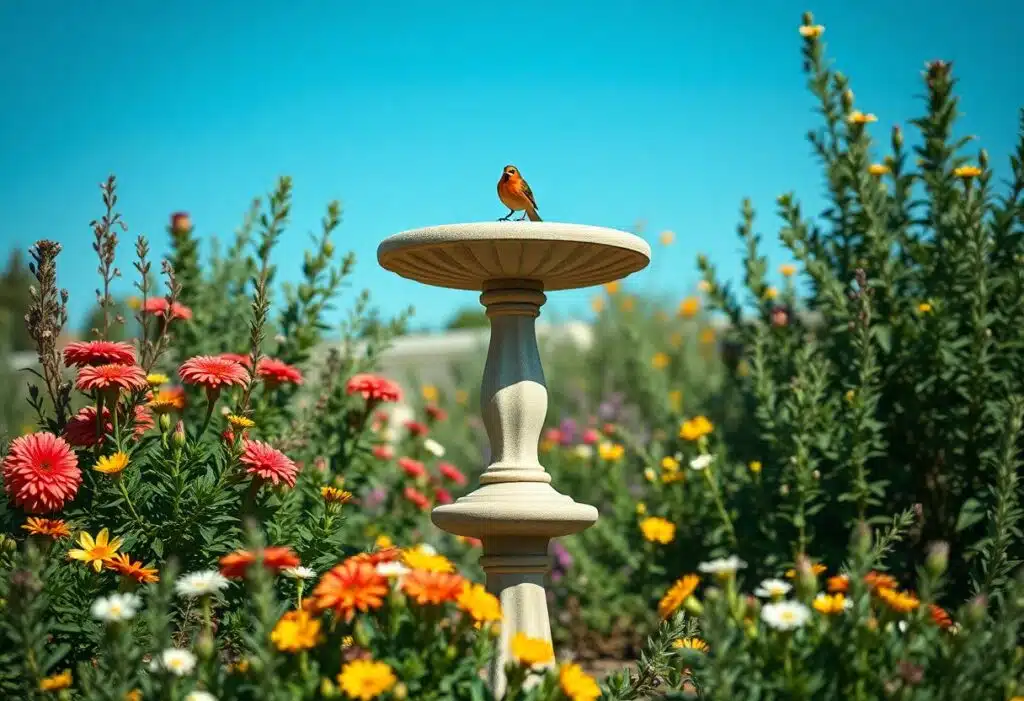How to Keep Bees Away From Bird Bath?
This article equips you with effective ways to keep bees away from your bird bath while ensuring wild birds can enjoy their bath safely. You’ll find that bees and wasps can be attracted to the same sweet water that brings our feathered friends in. By following these simple tips, such as cleaning your bird bath regularly and using fake wasp nests, you can create a bee-free zone for your garden. For more ideas, check out our link on Bees in our bird bath! Help! and let’s keep those pesky creatures away!
keep bees away
Key Takeaways:
- Use Bee Guards: Adding bee guards to your hummingbird feeder can help keep bees away. These guards create smaller feeding ports that only hummingbirds can access, making it harder for bees to reach the nectar.
- Clean Regularly: Keep your feeders clean! Spills and drips can attract insects. Make sure to clean the outside and refill your feeder often to keep any sticky spots away from those pesky bees and wasps.
- Grow Pollinator-Friendly Plants: Planting flowers like bee balm nearby can distract bees from your hummingbird garden. Offer them an alternative nectar source to keep them busy!
> “By using these tips, you can create a friendly space for wild birds without harming other insects.” Feel free to hang your feeder in a shady area to keep the nectar cool and less attractive to bees, while also allowing hummingbirds to find the food easily. Happy birdwatching!

Understanding the Attraction of Bees to Bird Baths
Before you enjoy the calming presence of a bird bath, it’s important to know why bees are attracted to it. Bees are drawn to water sources because they need water for hydration and to regulate their nests. When you provide a bird bath, you may inadvertently invite these insects into your garden, especially if you also have lovely flowers nearby.
Why Bees Are Drawn to Water Sources
Water is crucial for bees as they use it for hydration and to cool their hive. With the increasing need for water during hot days, they will seek out your bird bath to quench their thirst. If there’s a reliable water source, you may see more bees buzzing around, which can be a concern for you if you also want to attract wild birds.
Factors That Enhance Attraction
Some things can increase the attraction of bees to your bird bath. Consider these factors:
- Exposed nectar from nearby flowers
- The sweetness of spilled sugar water around the bath
- Warm, sunny locations that bees prefer
- Cleanliness; a dirty bird bath can attract more insects
The more inviting your bird bath looks, the more likely it is to attract bees. Maintaining it with attention can help reduce their visits.
Attraction to your bird bath can also rise due to these causes:
- Flowers in bloom, which offer nectar and place you within their preferred feeding habitat
- A location that exposes them to the sun, enticing them in
- Sweet residues left from sugar water or nectar spills
The combination of these elements creates a tempting environment for bees. You might find them wandering close, even if you are trying to keep them away from your hummingbird feeders.
Tips for Keeping Bees Away
Some effective ways to keep bees away from your bird bath include:
- Choose a bird bath with a smooth, shallow design
- Provide a sugar water solution away from your bird bath
- Keep your bath in a partially shaded area
- Clean your bird bath regularly to avoid spills
- Consider adding fake wasp nests nearby
The right strategies can help you enjoy your bird bath without the buzz of pesky bees.
Choosing the Right Bird Bath Design
Keeping in mind that a well-designed bird bath can reduce bee visits, you should look for options that are shallow and smooth. Bird baths with wide edges will allow wild birds to perch easily, while a saucer-style design can prevent insects from accessing the water. You can also seek bird baths with built-in bee guards to provide even better protection against these buzzing visitors.
Maintaining Cleanliness to Reduce Attractants
To ensure your bird bath remains free from bee attraction, it’s imperative to keep it clean and tidy. Regularly dump out old water and refill it fresh to avoid any chemical buildups that may entice bees and wasps.
With a clean bird bath, you minimize the chance of sugary spills that attract insects. Ensure any leaks or drips are promptly fixed, as even small amounts of sugar water can lure these pests. Regular cleaning not only encourages wild birds to visit but also prevents yellow jackets and other unwelcome guests from making your garden their hangout. This little tip goes a long way in creating a peaceful area for your birds without harming any beneficial insects.
Effective Water Management Techniques
Keep your bird bath clean and well-managed to create a less inviting spot for bees. Regularly changing the water and maintaining cleanliness helps deter insects from taking over. Make sure you rinse and scrub the bath to remove any sugar water or nectar spills that might attract bees. By managing the water effectively, you can enjoy your bird bath without the hassle of insects.
Altering Water Temperature and Flow
Techniques such as adjusting the temperature and flow of water can help keep bees away from your bird bath. Below are some effective methods:
| Change Water Temperature | Keep water cool to discourage bee visits. |
| Alter Water Flow | Add a fountain or dripper to create movement that attracts birds but keeps bees at bay. |
Utilizing Natural Repellents
Management of your bird bath can include using natural repellents to keep bees away. Herbs like mint and basil or important oils such as eucalyptus can deter bees from approaching while still being safe for birds. You can place these herbs nearby or lightly spray the area with a diluted solution of important oils to create a natural barrier. This is a great way to enjoy your garden without harming bees and birds alike.
Altering the environment around your bird bath can effectively push bees away from your feeders. Simple techniques such as the use of mint and basil as natural repellents, or even creating a lightly scented barrier, can keep bees at a distance while still being friendly to your hummingbird garden. You’ll find that a few small adjustments can make a big difference in keeping your space enjoyable for wild birds like hummingbirds.
Creating Alternative Water Sources
Your bird bath can attract bees as they love sugary water just like hummingbirds. To keep bees away from hummingbird feeders while providing fresh water for your feathered friends, create alternative watering spots. By offering dedicated water sources for bees, you can divert them from the bird bath and create a more peaceful environment for all the wild birds visiting your garden.
Setting Up Designated Bee Water Stations
Alternative water stations are a smart way to keep bees away. Use shallow bowls filled with clean water, and add small rocks or pebbles for bees to land on. This setup allows bees to drink safely without interfering with your hummingbird feeders. Place these stations a few feet away from your bird bath.
Incorporating Plant Life for Natural Deterrents
There’s a simple way to deter bees by adding certain plants to your garden. Choose flowering plants that don’t attract bees as much. For instance, consider incorporating bee balm and trumpet creeper, which are less appealing to bees and wasps. By planting these in your garden, you’ll create an environment where wild birds feel comfortable, while bees might be naturally driven away, thus protecting your hummingbird feeders effectively.
Strategic Placement of Bird Baths
Despite the challenge of keeping bees away from your bird bath, strategic placement can significantly help. By carefully choosing where you position your bird bath, you can create an environment that attracts wild birds while deterring bees. Consider moving your baths at least a few feet away from any hummingbird feeders to avoid drawing bees to both nectar sources.
Selecting Optimal Locations
With the right locations, you’ll make it easier for birds to find your baths while keeping pesky insects at bay. Look for spots that are visible and accessible for birds, placing the bath in an area where sunlight can warm the water but is slightly away from flowering plants that attract bees.
Using Shade and Sunlight to Your Advantage
While both bees and birds enjoy sunny spots, birds often prefer shaded areas to cool off. Position your bird bath in a partially shaded location. This keeps the water cool and less attractive to bees, who prefer warmer nectar sources.
Selecting a spot that balances sunlight and shade will help you keep bees away while creating a welcoming space for birds. Birds often gravitate toward partially shaded areas where the water stays fresh. Bees, on the other hand, love the sunlight and will be less likely to venture into those cooler areas. Consider planting flowers like bee balm and using a saucer feeder as nearby alternatives to occupy bees. This means your bird bath remains a safe zone for feeding and drinking without attracting bees.

Monitoring and Maintenance
To effectively keep bees away from your bird bath, consistent monitoring and maintenance are important. Regular checks ensure that your feeding stations remain bee-free while still attracting the delightful wild birds you want. Cleaning the bird bath and checking for leaks helps maintain a safe environment for birds and reduces the chance of insects being attracted to any spills. You can make small tweaks along the way to keep your bird bath as inviting as possible without allowing bees to move in.
Regular Inspections for Bee Activity
You should check your bird bath often for any signs of bee activity. Look for any bees hovering around or attempting to access the water at each inspection. Observing their behavior can help you identify if changes are needed. If bees show up frequently, consider relocating your bird bath or trying different placement techniques to minimize their presence.
Seasonal Adjustments for Long-Term Success
LongTerm success in keeping bees away means adjusting your setup with the seasons. Changing the location or type of bird bath you use can make a difference in attracting wild birds while keeping bees at bay. You may need to alter your methods as bee activity fluctuates with the changing seasons.
Seasonal adjustments are effective because bees and wasps are generally more active in the warmer months. By switching locations and altering the type of bird bath, you can keep your setup less attractive to bees. For example, during summer, consider using shaded areas to deter bees since they prefer sunny spots. As fall approaches, you can switch to decorative bird baths that are less appealing to insects. Regularly cleaning and monitoring the water will ensure it continues to attract wild birds while keeping bees away.
Conclusion
So, if you’re looking to keep bees away from your bird bath, you can use several effective tips. Consider adding bee guards or relocating the bird bath occasionally. Keeping your bird bath clean will also help minimize spills that attract bees. You can provide an alternative food source for bees, like a shallow bowl of sugar water placed away from the bird bath. Check out this link on Bees Drinking From Bird Bath | Beekeeping & Apiculture Forum for more insights. With these small changes, you can enjoy your garden without the buzz of bees interfering with your hummingbird visitors!
FAQ
Q: How can I keep bees away from my bird bath?
A: To keep bees away from your bird bath, try these simple tips:
- Use a shallow bird bath that has sloped edges. This makes it hard for bees to drink.
- Place the bird bath in a shaded area. Bees prefer sunny spots, so shade may help.
Q: What can I use as a decoy for bees?
A: Set up a separate shallow bowl filled with a sugar water solution a few feet away. This will attract the bees and keep them busy while the hummingbirds feed.
Q: How often should I clean my bird bath?
A: It’s best to clean your bird bath daily. This keeps it fresh for the wild birds and helps to reduce odors that attract bees.
Here are some important points to keep in mind:
By providing an alternative food source for bees, such as a separate sugar water bowl, you can keep the focus away from your bird bath.
Also, make sure to check for flower gardens nearby that might attract bees. If you notice more bees, consider moving the bird bath farther away. Using strategies like creating a pollinator garden with plants like bee balm can also help manage the bee population in your yard.
As a bird enthusiast with a passion for sharing the wonders of our feathered friends. As a writer and nature lover, I'm thrilled to connect with fellow bird buffs and inspire others to take flight into the fascinating world of birds. Let's wing it together!


